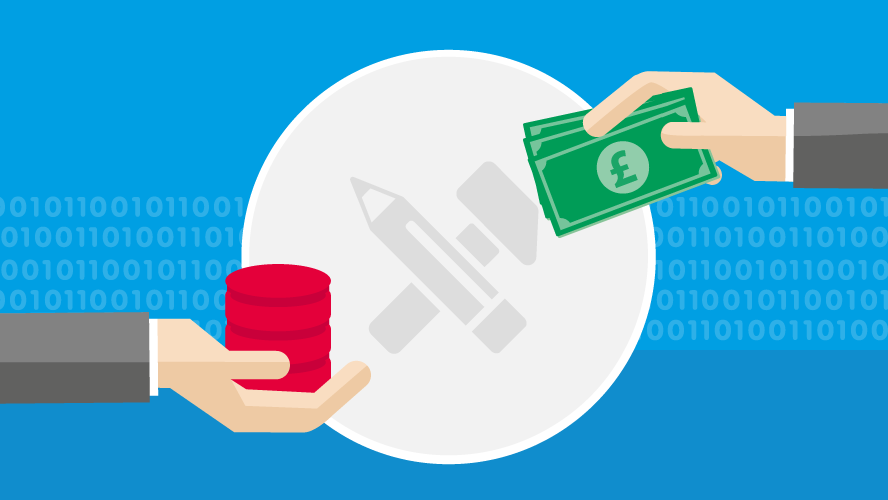To Buy or Not to Buy?
Data is crucial to every aspect of today’s business and nowhere is this more true than within
Sales and Marketing. Alongside your products, services and solutions – data is one of your key
tools and should be the raw material used to drive sales through intelligence led decisions.
All too often experienced marketers overlook the data they have in their own databases which
leads to one of their core tools becoming recycled, overused or outdated. We’ve seen it time
and time again with clients big and small who elect to save money by reusing a database, only
to find that a few days into a campaign they can’t get hold of anyone and half the businesses
have closed!
Ensuring you have the correct data won’t solve all your problems but it will give you the best
possible start to maximising the ROI for any campaign and surely that’s what we’re all here to
do?
It’s a Question of Trust.
Data, whether it’s for email marketing, direct mail or telemarketing, can easily be overlooked
due to the complexity of specific requirements. However, shying away from the requirement can lead to
poor results and decisions based on out of date intelligence.
When you do decide to take the plunge and buy a new list there’s the issue of where to go and who to buy from?
Can you trust the seller to be honest or are you worried they will pressure you into accepting
anything they have lying around, whether it’s fit for purpose or not?
The Right Time to Buy?
On top of all this, often organisations don’t know when they need to buy new data and the warning
signs all too often aren’t recognised. When there's slow attrition of results, it's easy to blame the person
on the phone or the process following the data input, rather than the raw data itself. Just
because it worked 2 years ago does not mean the data is the right fit for you now! Resources
become misspent on corrections, wasted calls and underperforming campaigns, when all that was
required was a bit of time spent finding the right data up front.
We work with thousands of data records every day on our Lead Generation campaigns and have
built an enviable knowledge of how, where and when to get the best data. Based on our daily
experiences, we’ve put together a best practice tool kit for sourcing the best B2B data for your
direct marketing campaigns.
Stage 1: Clearly Define your Data Requirements
Before buying a database, it is important to understand what requirements the data needs to
satisfy and if those requirements are realistic. All too often marketers rush into buying data they
think they need; only to find the requirements they thought they had didn’t drive them to source
the correct data. Work backwards from the requirements the data needs to fulfil; targeting an
IT Director looks fine on paper but in SMEs do they have the real decision making power?
Stage 2: Know your Source!
With Data it’s important that you trust the supplier and the quality of information you’re buying.
Ensuring that data is of the best fit and highest quality for the purpose not only supports your
existing campaigns but will give you real options for the future. We’ve all seen the “flash sale” or
million records for an unbelievable rate, however large volume doesn’t always produce quality and
as with anything in life, often buying cheap means buying twice.
Get counts from as many data providers as you can and compare the number of records, if one
provider is offering substantially more records than anyone else it’s probably too good to be
true.
If you are unsure about a particular untested supplier, ask for references from multiple reputable
companies and don’t be afraid to ask how they source their data.
Stage 3: Consider Your Options
Now that you know what’s on offer and for how much, is purchasing data still the right option?
Purchasing data could be the right option for you. However, if the data available out there on the
open market doesn’t match your requirements then you may want to consider other options,
such as building the data or cleansing the data you already have.
Building data may seem like an expensive option but at least you know that every record built
will match the exact customer profile you have specified.
Stage 4: Make it Work for You
Make sure that everything about the data works for you. The format, quantity and timing of your
data purchase needs to be right. If you really need 100,000 records, do you need them all right
now? Would online access or drawdown service work better for you? Remember that the larger
the order the more likely you are to get flexibility on delivery and pricing.
Stage 5: Test, Test and Test Again
Most importantly – Test it! If a data company won’t give you reasonable samples (at least 10 or
more records) then walk away, you wouldn’t invest in a car you’d never driven or house you
hadn’t seen, don’t let data be any different.
Finally...
Finding the right data that performs for your business is an art form and may take several
attempts to get it right. However, knowing what to look for and how to avoid the pitfalls can make
the process easier. Be realistic with your requirements and always test the data before
committing to a large purchase. When in doubt, get help and work with a data partner you can
trust to deliver you quality data to suit your requirements.
Image Credit: DMA








